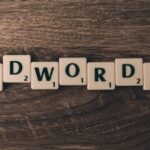Understanding PPC Bidding Strategies
Effective management of Pay-Per-Click (PPC) campaigns hinges significantly on mastering bidding strategies. Bidding is the mechanism by which advertisers specify how much they are willing to pay for a click, impression, or conversion, directly influencing visibility, cost-efficiency, and ultimately, return on investment (ROI). The goal isn’t merely to bid high but to bid intelligently, aligning bids with specific business objectives, campaign performance, and the intricate dynamics of the ad auction. The choice of a bidding strategy is a foundational decision that shapes the trajectory of any PPC campaign, requiring a deep understanding of available options, their underlying mechanics, and the scenarios in which they excel.
The core of PPC bidding resides within the ad auction, a real-time process that determines which ads appear, in what order, and at what cost. In platforms like Google Ads, this auction is driven primarily by Ad Rank, a metric calculated using a combination of the advertiser’s bid, the quality of their ad (Quality Score), the context of the user’s search (e.g., location, device, time of day), and the expected impact of ad extensions and other ad formats. Quality Score, a diagnostic tool measuring the relevance and quality of keywords, ads, and landing pages, plays a pivotal role; a higher Quality Score can lead to lower costs per click (CPCs) and better ad positions for the same bid, effectively making your bid go further. Understanding this interplay between bid and quality is paramount. A high bid alone won’t guarantee success if ad quality is poor, and conversely, excellent ad quality can sometimes compensate for a relatively lower bid.
Before diving into specific strategies, it’s crucial to define campaign goals. Are you aiming for maximum brand visibility, driving traffic to a website, generating leads, or directly facilitating sales? Each objective maps to different bidding strategies. A campaign focused on brand awareness might prioritize impressions, while a performance-driven campaign would heavily lean towards conversions or conversion value. Budgets also heavily influence strategy; a limited budget might necessitate a more conservative, cost-controlled approach, whereas a larger budget allows for more aggressive strategies aimed at market share dominance. Historical data, particularly conversion volume, is another critical factor. Automated strategies thrive on data, requiring a minimum number of conversions to learn and optimize effectively.
Manual Bidding Strategies: Granular Control and Precision
Manual bidding offers advertisers the highest degree of control over their bids. With Manual Cost-Per-Click (CPC), you set a maximum bid for each keyword or ad group. This means you specify the highest amount you’re willing to pay for a click. This strategy is often preferred by advertisers who have a very precise understanding of their keyword performance, are managing campaigns with low conversion volume, or operate in niche markets where automation might struggle to learn.
-
Manual CPC:
- Mechanism: You manually set the maximum CPC bid for each keyword, ad group, or placement. The actual CPC you pay (the “actual CPC”) is often lower than your maximum bid, determined by the ad auction dynamic (specifically, the bid required to beat the next highest competitor’s Ad Rank).
- Use Cases: Ideal for new campaigns with no historical conversion data, highly specialized campaigns where manual oversight is critical, or low-volume campaigns where automated strategies might not have enough data to optimize effectively. It’s also suitable for testing keywords or specific targeting options before committing to automated bidding.
- Pros:
- Maximum Control: Full control over how much you spend per click, allowing for precise budget allocation.
- Transparency: You can see exactly what you’re bidding on and how it relates to your budget.
- Immediate Adjustments: Quick response to performance fluctuations, allowing for real-time bid adjustments.
- Good for Testing: Excellent for A/B testing ad copy, landing pages, or new keyword sets, as you control the variables more directly.
- Cons:
- Time-Consuming: Requires significant manual effort and constant monitoring, especially for large accounts with many keywords.
- Missed Opportunities: Without the benefit of real-time signals and machine learning, you might miss opportunities to bid higher for highly valuable clicks or bid lower for less valuable ones.
- Scalability Issues: Difficult to manage effectively at scale across hundreds or thousands of keywords.
- Potential for Overspending/Underspending: Human error can lead to inefficient bids.
- Best Practices:
- Start with conservative bids and gradually increase them based on performance.
- Monitor keyword performance (CTR, conversion rate, CPC) closely.
- Utilize bid adjustments (device, location, audience, schedule) to refine bids based on specific contexts.
- Implement a structured bidding approach, such as bidding higher on exact match keywords and lower on broad match.
- Regularly prune underperforming keywords and expand on high-performing ones.
-
Enhanced CPC (eCPC):
- Mechanism: An extension of Manual CPC, eCPC automatically adjusts your manual bids up or down by up to 30% (though this percentage can fluctuate based on platform updates) in real-time. It uses machine learning to identify auction signals that indicate a higher or lower probability of conversion. If a click seems more likely to convert, eCPC can slightly raise your bid, and if less likely, it can lower it.
- Use Cases: A good transitional strategy for campaigns moving from pure manual bidding towards automation, or for campaigns that have some conversion history but not enough for full Smart Bidding strategies. It works well when you want to retain a degree of control while leveraging some automation.
- Pros:
- Balance of Control and Automation: Offers more control than fully automated strategies while still providing some optimization benefits.
- Improved Conversion Potential: Can increase conversion rates by optimizing bids for more valuable clicks.
- Less Manual Effort: Reduces the need for constant manual bid adjustments compared to pure Manual CPC.
- Works with Attribution: Can optimize for conversions across various attribution models.
- Cons:
- Limited Optimization: The bid adjustments are less aggressive and comprehensive compared to full Smart Bidding strategies.
- Requires Conversion Tracking: Needs accurate conversion tracking to function effectively.
- Still Requires Oversight: While less manual, it still benefits from regular review and manual adjustments of the base bids.
- Best Practices:
- Ensure robust conversion tracking is in place.
- Start with eCPC enabled on existing Manual CPC campaigns that have a reasonable conversion history.
- Monitor performance closely to see if it delivers an improvement in conversions or CPA compared to pure Manual CPC.
- Combine with bid adjustments for even finer control.
Automated Bidding Strategies: Leveraging Machine Learning
Automated bidding strategies, often referred to as “Smart Bidding” in Google Ads, harness the power of machine learning and artificial intelligence to optimize bids in real-time. These strategies analyze a vast array of contextual signals (e.g., device, location, time of day, user behavior, operating system, browser, demographics, remarketing lists, search intent) to set bids for each individual auction. This allows for unparalleled precision and scalability, adapting bids dynamically to maximize specific performance goals. For these strategies to be effective, accurate conversion tracking is non-negotiable, and sufficient conversion data is typically required for the algorithms to learn and optimize.
-
Maximize Clicks:
- Mechanism: This strategy automatically sets bids to get as many clicks as possible within your budget. It’s designed to drive high traffic volume.
- Use Cases: Ideal for campaigns focused on driving traffic to a website, increasing brand awareness through visits, or for new websites needing initial visitors. It’s often used when conversion tracking isn’t fully set up or when conversions are not the primary goal.
- Pros:
- Simplicity: Very easy to set up and manage.
- Traffic Volume: Excellent for quickly generating a large number of clicks.
- Budget Efficiency: Attempts to get the most clicks for your set budget.
- Cons:
- No Conversion Focus: Does not optimize for conversions, meaning traffic quality might be low, leading to poor conversion rates.
- Potentially High CPA: While clicks are maximized, the cost per acquisition could be very high if traffic is irrelevant.
- Limited Control: Less control over individual bids.
- Best Practices:
- Set a maximum CPC bid limit to prevent overspending on individual clicks.
- Use with strong negative keyword lists to filter out irrelevant traffic.
- Monitor bounce rates and time on site to gauge traffic quality.
- Consider transitioning to a conversion-focused strategy once sufficient conversion data is accumulated.
-
Maximize Conversions:
- Mechanism: This strategy automatically sets bids to help get the most conversions possible within your budget. It uses historical conversion data and real-time signals to identify optimal bidding opportunities.
- Use Cases: Best suited for campaigns with a clear conversion goal (e.g., leads, sales) where the immediate objective is to drive as many conversions as possible, regardless of the individual cost per conversion.
- Pros:
- Conversion Volume: Excellent for maximizing the number of conversions.
- Automation: Reduces manual effort significantly.
- Scalability: Can manage bids for large campaigns effectively.
- Cons:
- Budget-Dependent CPA: While it maximizes conversions, it doesn’t guarantee a specific cost-per-acquisition (CPA). Your CPA might fluctuate based on competition and auction dynamics.
- Requires Conversion Tracking: Absolutely dependent on accurate conversion tracking.
- Needs Data: Requires a reasonable volume of conversion data (typically 15-30 conversions in the last 30 days per campaign) to learn and optimize effectively.
- Best Practices:
- Ensure robust and accurate conversion tracking.
- Monitor your CPA closely, as it might increase if the system finds more conversion opportunities at a higher cost.
- Set an appropriate daily budget that allows the strategy to explore opportunities.
- Avoid frequent budget changes, as they can disrupt the learning phase.
- Consider setting a target CPA if you have a specific cost-per-acquisition goal.
-
Target CPA (tCPA):
- Mechanism: This strategy automatically sets bids to help get as many conversions as possible at or below your target cost-per-acquisition. It uses historical data and real-time signals to predict which auctions are most likely to lead to a conversion within your target CPA.
- Use Cases: Ideal for advertisers who have a clear understanding of their desired cost per lead or sale and want to maintain efficiency while maximizing conversion volume within that budget.
- Pros:
- Cost Efficiency: Aims to keep your CPA within a defined target, making budget management predictable.
- Conversion Focused: Still prioritizes conversion volume.
- Automation: Highly efficient for managing bids at scale.
- Cons:
- Requires Significant Data: Needs even more conversion data than Maximize Conversions (ideally 30+ conversions in the last 30 days per campaign for optimal performance).
- Constrictive Target: Setting too low a target CPA can restrict reach and conversion volume, leading to limited impressions or clicks.
- Learning Phase: Requires a learning period, especially when targets are changed significantly.
- Best Practices:
- Base your target CPA on historical performance or your business’s desired profitability margin.
- Start with a realistic target CPA, close to your historical average, and gradually adjust it.
- Allow sufficient time (2-4 weeks) for the strategy to learn before making significant changes.
- Monitor impression share and conversion volume to ensure your target CPA isn’t too restrictive.
- Avoid frequent changes to the target CPA; small, incremental adjustments are better.
-
Maximize Conversion Value:
- Mechanism: This strategy automatically sets bids to help get the most conversion value for your budget. It’s particularly useful for e-commerce businesses where different conversions might have different monetary values (e.g., high-value product sales versus low-value product sales).
- Use Cases: Perfect for e-commerce stores, SaaS companies with tiered pricing, or any business where conversion actions have variable revenue associated with them. Requires conversion value tracking to be set up.
- Pros:
- Revenue Optimization: Focuses on maximizing revenue, not just conversion count.
- Intelligent Bidding: Prioritizes higher-value conversions.
- Scalability: Efficiently manages bids for thousands of products or services.
- Cons:
- Requires Value Tracking: Demands accurate conversion value tracking.
- Needs Data: Similar to other conversion-focused strategies, it requires sufficient conversion data with associated values.
- Budget-Dependent ROAS: Doesn’t guarantee a specific return on ad spend (ROAS) without a target.
- Best Practices:
- Ensure dynamic conversion values are passed back to the ad platform (e.g., through an e-commerce tracking setup).
- Monitor your ROAS even without a target to understand efficiency.
- Combine with Target ROAS for more controlled revenue generation.
-
Target ROAS (tROAS):
- Mechanism: This strategy automatically sets bids to help get as much conversion value as possible at your target return on ad spend. For instance, a tROAS of 300% means you aim to get $3 in conversion value for every $1 spent on ads.
- Use Cases: The gold standard for e-commerce and revenue-driven businesses aiming to achieve a specific profitability target from their ad spend.
- Pros:
- Profitability Focused: Directly optimizes for return on investment, which is crucial for sustainable growth.
- Efficiency: Drives revenue at a predefined efficiency level.
- Automation: Reduces complexity for large product catalogs.
- Cons:
- Extensive Data Requirements: Needs significant conversion data with values (ideally 50+ conversions in the last 30 days for optimal performance, potentially more).
- Restrictive Target: Setting too high a tROAS can limit reach and conversion volume.
- Learning Phase: Requires a learning period, especially when targets are changed.
- Latency: There might be a slight delay in the system reacting to changes in the market or target due to its learning process.
- Best Practices:
- Calculate your target ROAS based on your business’s profit margins and break-even points.
- Start with a realistic target ROAS, perhaps slightly below your historical average, and gradually increase it.
- Allow ample time (2-4 weeks) for the strategy to learn before making significant changes.
- Monitor impression share and conversion volume; if they drop significantly, your target might be too aggressive.
- Be mindful of conversion lag; sales that occur days after a click can impact reported ROAS.
-
Target Impression Share:
- Mechanism: This strategy automatically sets bids to help achieve a specific percentage of eligible impressions at a desired location on the search results page (anywhere, top, or absolute top).
- Use Cases: Primarily for brand awareness campaigns where visibility is paramount, or for campaigns where maintaining a dominant position against competitors is crucial.
- Pros:
- Visibility: Guarantees a certain level of visibility for your ads.
- Competitive Edge: Useful for ensuring your brand is always present in highly competitive landscapes.
- Simplicity: Easy to set up and monitor for impression goals.
- Cons:
- No Conversion Focus: Does not optimize for clicks or conversions, which means high visibility doesn’t necessarily translate to business results.
- Costly: Can be very expensive if you aim for a high impression share in a competitive market, leading to high CPCs.
- Budget Capping: Can exhaust your daily budget very quickly if the target is aggressive and competition is high.
- Best Practices:
- Set a maximum CPC bid limit to control costs.
- Use cautiously, as focusing solely on impressions can lead to inefficient spend.
- Ideal for brand keyword campaigns where you want to dominate search results for your own brand name.
- Combine with other strategies for non-brand campaigns where conversions are the goal.
-
Portfolio Bid Strategies (Google Ads Specific):
- Mechanism: These allow you to apply automated bidding strategies across multiple campaigns, ad groups, or keywords, centralizing optimization. Instead of managing each campaign’s bidding independently, you create a portfolio and apply a single strategy (e.g., Target CPA, Target ROAS) across all entities within that portfolio. This aggregates conversion data, providing the algorithm with more signals for optimization.
- Use Cases: Excellent for large accounts with many campaigns targeting similar conversion goals or product lines. It allows the system to balance bids across campaigns to achieve the portfolio’s overall target.
- Pros:
- Cross-Campaign Optimization: Optimizes across multiple campaigns, which can lead to better overall performance.
- Centralized Management: Simplifies bid management for complex accounts.
- Improved Learning: Aggregates data, potentially accelerating the learning phase for automated strategies.
- Cons:
- Less Granular Control: You lose some individual campaign control as the system optimizes for the portfolio target.
- Requires Harmonized Goals: All campaigns within a portfolio should ideally share a similar objective and conversion type.
- Best Practices:
- Group campaigns with similar conversion goals and performance characteristics into a portfolio.
- Start with a realistic target that considers the average performance of campaigns within the portfolio.
- Monitor overall portfolio performance rather than individual campaign performance in isolation.
Factors Influencing Bid Strategy Choice and Optimization
Selecting the right bidding strategy is not a static decision but an ongoing process influenced by several dynamic factors.
-
Campaign Goals: The primary driver. If it’s pure brand visibility, “Target Impression Share” or “Maximize Clicks” might be chosen. If it’s leads or sales, “Target CPA,” “Maximize Conversions,” “Target ROAS,” or “Maximize Conversion Value” are appropriate. Your bidding strategy must directly align with what you are trying to achieve.
-
Budget: A limited budget might make aggressive “Maximize Conversions” or “Target Impression Share” challenging to scale, potentially leading to budget caps and missed opportunities. It might necessitate a more conservative “Target CPA” or “eCPC” approach initially, focusing on efficiency over volume. Conversely, a large budget allows for more flexibility and aggressive targets.
-
Historical Data / Conversion Volume: Automated strategies are data-hungry. New campaigns with no conversion history must start with Manual CPC or Maximize Clicks. As conversion data accumulates (e.g., 15+ conversions/month for Max Conversions, 30+ for Target CPA, 50+ for Target ROAS), these automated strategies become viable and highly effective. Insufficient data leads to poor optimization.
-
Competitive Landscape: In highly competitive auctions, aggressive strategies might be necessary to gain visibility. High Quality Scores become even more critical to keep costs down. If competition is low, a less aggressive bid can still yield good results.
-
Industry/Niche: Some industries have naturally higher CPCs or longer sales cycles. Bidding strategies must account for these nuances. A high-value B2B lead might justify a high CPA, making Target CPA a good fit, while a low-margin e-commerce product needs a tight Target ROAS.
-
Product/Service Lifecycle: New products might need awareness (Maximize Clicks, Target Impression Share), while mature products can focus on profitability (Target ROAS, Target CPA). Seasonal products require adjusting bids and strategies around peak and off-peak times.
-
Seasonality: Bidding strategies need to adapt to seasonal fluctuations. During peak seasons (e.g., Black Friday, holidays), you might increase targets (higher CPA/lower ROAS) to capture more volume, expecting higher conversion rates. During off-peak, you might tighten targets for efficiency. Automated strategies are generally good at reacting to seasonality if historical data for those periods exists.
-
Account Structure: A well-structured account with tightly themed ad groups and relevant keywords/ads provides the automated bidding algorithms with better, clearer signals, leading to more effective optimization. Disorganized accounts confuse the algorithms.
Advanced Considerations & Optimization
Bidding strategies are powerful, but their effectiveness can be significantly enhanced through advanced optimization techniques.
-
Bid Adjustments: Even with automated bidding, manual bid adjustments (or automatic adjustments if enabled for specific signals within Smart Bidding) are crucial. These allow you to fine-tune bids based on specific contexts:
- Device: Increase bids for mobile if mobile conversions are higher, or decrease for desktop.
- Location: Bid more aggressively in high-value geographic areas.
- Audience: Apply bid adjustments for specific audience segments (e.g., remarketing lists, in-market audiences, custom intent audiences) that are more likely to convert or have higher lifetime value.
- Ad Schedule: Increase bids during peak conversion hours or days.
- Demographics: Adjust bids based on age or gender if specific groups show higher conversion rates.
- Bid adjustments layer on top of your chosen bidding strategy, providing a nuanced layer of control.
-
Attribution Models: The chosen attribution model directly impacts how conversions are credited and, consequently, how bidding strategies learn and optimize.
- Last Click: Credits the last click, often underestimating the value of earlier touchpoints, which might lead automated strategies to over-prioritize late-stage interactions.
- Linear/Time Decay/Position-Based: Distributes credit across multiple touchpoints, providing a more holistic view. This can help automated bidding understand the value of clicks earlier in the conversion path, potentially leading to more balanced bidding.
- Data-Driven Attribution (DDA): Uses machine learning to assign credit based on actual campaign data. This is generally the most accurate and recommended model for Smart Bidding, as it provides the most precise signals for optimization. Ensure your attribution model aligns with your bidding strategy to provide the most accurate conversion signals.
-
Negative Keywords: While not directly a bidding strategy, a robust negative keyword strategy is vital. By excluding irrelevant search terms, you prevent your ads from showing for non-converting queries, saving budget and ensuring that your chosen bidding strategy can focus its efforts on relevant, high-intent traffic. This indirectly lowers your effective CPA/raises your ROAS.
-
Audience Segmentation: Leveraging audience lists (remarketing lists, customer match, similar audiences) within campaigns allows you to apply different bidding strategies or bid adjustments to specific user segments. For example, you might bid higher for users who have visited your checkout page but didn’t convert, knowing they are highly engaged.
-
Testing Bidding Strategies: PPC is an iterative process. Don’t set a strategy and forget it.
- A/B Testing (Campaign Experiments): Use platform features like Google Ads’ campaign experiments to test different bidding strategies against each other or to test changes to your target CPA/ROAS. This allows for controlled experimentation without risking overall campaign performance.
- Monitor Key Metrics: Constantly track key performance indicators (KPIs) relevant to your goal:
- CPA (Cost Per Acquisition): For lead generation/sales campaigns.
- ROAS (Return On Ad Spend): For e-commerce/revenue-driven campaigns.
- CTR (Click-Through Rate): Indicates ad relevance and appeal.
- Conversion Rate: Percentage of clicks that convert.
- Impression Share: Measures your visibility compared to eligible impressions.
- Budget Utilization: Ensure your budget is being spent effectively, not capped prematurely.
-
Machine Learning and AI in Bidding (Deeper Dive into Smart Bidding):
- Smart Bidding leverages a vast array of real-time signals beyond what a human could process: device type, operating system, physical location, time of day, day of week, audience lists, ad creative, product attributes, specific query characteristics, browsing behavior, and more.
- It learns from historical conversion patterns to predict conversion probability at the moment of auction. This predictive capability allows it to dynamically adjust bids for each individual auction, rather than relying on static, predefined bids.
- The more quality conversion data it receives, the smarter it becomes. Therefore, ensuring comprehensive and accurate conversion tracking (including conversion values where applicable) is the most critical prerequisite for success with automated bidding.
-
Data Privacy and its Future Impact: Evolving data privacy regulations (e.g., GDPR, CCPA, deprecation of third-party cookies) will impact the availability of certain signals for automated bidding. Ad platforms are developing privacy-preserving solutions, such as enhanced conversions and consent mode, to provide aggregated, anonymized data for optimization. Advertisers must adapt by implementing these solutions to maintain the effectiveness of their automated bidding strategies. First-party data will become increasingly valuable.
-
Multi-Channel Bidding Considerations: While this article focuses on PPC, businesses often operate across multiple advertising channels (PPC, social media, display, video). Understanding the customer journey across these channels, using cross-channel attribution, and potentially integrating bidding insights across platforms can lead to a more holistic and efficient advertising strategy, although direct cross-platform bidding optimization is still evolving.
-
Lifetime Value (LTV) Integration: For businesses where customer value extends beyond the initial purchase (e.g., subscription services, repeat purchases), integrating LTV into bidding strategies can be transformative. Instead of optimizing for immediate conversion value or CPA, you can optimize for the expected LTV of a customer. This typically involves passing predicted LTV values back as conversion values or using CRM data. This allows automated bidding to bid more aggressively for users who are likely to become high-value, long-term customers, even if their initial conversion CPA seems high.
Troubleshooting Bidding Performance
Even with the best strategies, performance can sometimes dip. Troubleshooting involves systematically identifying and addressing potential issues.
-
Underperforming CPA/ROAS:
- Target Too Aggressive: Your target CPA might be too low, or your target ROAS too high, restricting reach. Try a slightly more lenient target.
- Insufficient Data: The strategy might not have enough conversion data to learn effectively. Review conversion volume.
- Conversion Tracking Issues: Verify that conversion tracking is accurate and not double-counting or missing conversions. Use diagnostic tools provided by the ad platform.
- Budget Constraints: Is your campaign frequently budget-capped? This limits opportunities and can inflate CPA/lower ROAS.
- Ad Copy/Landing Page Issues: Poor ad relevance or a confusing landing page can lead to low conversion rates, regardless of bidding.
- Competitor Activity: Increased competition can drive up costs. Check auction insights.
- Seasonality/Market Changes: External factors can impact performance.
- Long Conversion Lag: If conversions take a long time (e.g., B2B sales cycle), the bidding algorithm might struggle with data latency.
-
Low Impression Share:
- Bid Too Low: Your bids might not be competitive enough to win auctions or achieve desired ad position.
- Budget Capped: Your daily budget is being exhausted before the day is over, limiting how often your ads can show.
- Low Quality Score: Poor ad relevance, low expected CTR, or poor landing page experience can lead to lower Ad Rank, even with a decent bid.
- Ad Rejections/Disapprovals: Ensure all ads are approved and running.
- Target Impression Share Setting: If using this strategy, ensure your target is realistic and your max CPC bid limit is not too restrictive.
-
Budget Capping:
- Increase Budget: The simplest solution if your campaigns are performing well and can scale.
- Lower Bids/Targets: Reduce your target CPA/increase target ROAS to make your budget stretch further.
- Refine Targeting: Exclude irrelevant audiences, locations, or devices to focus budget on high-value segments.
- Improve Quality Score: A higher Quality Score means lower CPCs, allowing more clicks for the same budget.
-
Conversion Tracking Issues: This is often the root cause of poor automated bidding performance.
- Verify Implementation: Use Google Tag Assistant or similar tools to confirm conversion tags are firing correctly.
- Check Duplicates: Ensure conversions aren’t being double-counted.
- Cross-Device Conversions: Ensure your tracking accounts for users converting on different devices.
- View-Through Conversions: Understand if these are included and how they might impact reported performance.
-
Data Lag: Be aware that conversions might not happen immediately after a click. This “conversion lag” means that reported performance for a given day might improve over the subsequent days. This is especially relevant for Target ROAS and Target CPA, as the system needs time for conversions to register before it can fully optimize. Adjust your reporting windows accordingly and don’t make rash decisions based on very recent data.
Future Trends in PPC Bidding
The landscape of PPC bidding is constantly evolving, driven by advancements in AI, changes in user behavior, and stricter data privacy regulations.
- Even More Sophisticated AI: Expect bidding algorithms to become even more granular, incorporating an ever-wider array of real-time signals and predictive analytics. The “black box” nature of some automated strategies will remain, but their ability to drive results will likely increase.
- Privacy-Centric Bidding: With the deprecation of third-party cookies and increasing user privacy controls, bidding will rely more heavily on aggregated, anonymized data, first-party data, and modeling techniques to infer user intent and conversion likelihood while respecting privacy. Advertisers will need to prioritize consent management and robust first-party data collection.
- Cross-Platform Integration: While true unified bidding across platforms like Google, Meta, and Amazon is still aspirational, there will likely be increasing integration of insights and data flows between platforms to inform more holistic media buying strategies. Attribution will become even more complex and critical.
- Enhanced LTV Integration: More sophisticated ways to directly integrate customer lifetime value into bidding models, moving beyond simple immediate conversion value. This will allow advertisers to acquire customers more strategically based on their long-term potential.
- Automated Budget Management: Beyond just optimizing bids, AI may take on a greater role in dynamically allocating budgets across campaigns and channels to maximize overall business outcomes, based on real-time performance and predicted future trends. This moves towards a more “set-and-forget” model for budget allocation, albeit with careful oversight.
- Performance Max (Google Ads specific): This new campaign type represents a significant shift, allowing advertisers to input conversion goals and let Google’s AI run ads across all its inventory (Search, Display, YouTube, Gmail, Discover) with fully automated bidding and asset optimization. Understanding how to feed this black box with good signals (audience signals, conversion tracking) will be key.
- Greater Emphasis on First-Party Data: As third-party data becomes less accessible, businesses that can collect and leverage their own first-party data will have a significant advantage in informing their bidding strategies, whether through customer match lists or direct integration with CRM systems.
In summary, PPC bidding strategies are the engine of paid advertising. Moving from manual control to leveraging powerful machine learning algorithms represents a significant shift in how advertisers manage their campaigns. The key to success lies not in avoiding automation, but in understanding how to best utilize it by providing clean, accurate data, defining clear goals, and continuously monitoring performance against those objectives. The future of PPC bidding is undeniably rooted in sophisticated AI, making the advertiser’s role one of strategic oversight, data interpretation, and skillful adaptation to an ever-evolving digital landscape.











